Upper Blue Mountains
December: hailstorms.
February: wettest month, violent storms; high rainfall helps to disperse seeds. (in Sydney March is the wettest month)
Baby Ringtail Possums on mother's backs.
Broad-headed Snakes move from rock shelters to tree hollows, e.g. in Peppermint Gums, vulnerable to fire (Jan/Feb)
Many snakes born. (Feb)
Perons Tree Frogs and many other species call and breed.
Broad-headed Snakes shelter under rocks. (will bask in sun).
Painted Skipper (Hesperilla picta) - small brown butterfly - feeds on Gahnia.
Klugs Xenica ( Geitoneura klugi klugi) - brown butterfly. (late Dec/Jan)
Buprestids (Jewel Beetles) on Leptospermum sp.
Mud Wasps nesting, Crickets call, Sawfly larvae feeding.
European Wasps.
Male Funnel-web Spiders wander, looking for females.
January/February:
Brown butterflies:
Bright-eyed Brown (Heteronympha cordace cordace) - larvae feed on Button Grass Sedge (Carex appressa).
Rock Ringlet (Hypocysta euphemia) near caves and cliffs.
Skipper (Trapezites symmomus) appears after thunderstorms. Larvae feeds on Lomandra sp.
Bush flies.
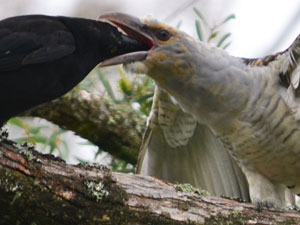 Currawong feeding a baby Channel-billed Cuckoo (Sue Nicol)
Currawong feeding a baby Channel-billed Cuckoo (Sue Nicol)
White‑throated Needletails arrive from Asia.
Cuckoos call louder and more frequently.
Yellow-tailed Black Cockatoos break up into smaller groups.
January:
Many young birds. Baby cuckoos fed by hosts (e.g. Channel-billed Cuckoos by Currawongs).
Red Wattlebirds and Noisy Friarbirds feeding on Banksia serrata flowers.
Immature Bowerbirds form mixed sex flocks.
February:
Mixed species feeding flocks begin to form → Spring.
Persoonia levis and Persoonia chaemaepitys flower.
Gums flower: Sydney Peppermint (Jan), Scribbly Gum (late Jan)
Miscellaneous flowers: Callistemon, Banksia serrata, Trigger Plants, Flannel Flowers, Cymbidium suave orchid.
Mistletoe fruits.
Gums shed bark:
Angophora costata; new bark orange, darkens later. (late summer)
Scribbly Gum; new year's pattern of moth larvae trails. (late summer)
Grey Gum; new bark orange. (late summer)
Rainforest canopy changes:
Acacia elata flowers carpet ground at Christmas;
Coachwood sepals exposed (after Xmas)
February rains: Christmas Bush/Coachwood sepals drop, seed dispersal, wattle flowers destroyed.
During January two special natural events were observed and reported in the Upper Blue Mountains - mating of the Giant Dragonflies at swamps along Mount Hay Road and flowering of Pink Flannel Flowers in burnt heathland near Hargraves Lookout on Shipley Plateau.
The Giant Dragonfly
The Giant Dragonfly (Petalura gigantea) is listed as endangered under the Threatened Species Conservation Act in New South Wales.
Unlike other dragonflies, the larvae of Petalura gigantea do not swim around in permanent ponds or open water. They make a permanent burrow in suitably soft ground/swamp/bog/mud and live much like a trap-door spider, catching small animals as they pass the entrance.
They are nocturnal predators and may use underwater burrow entrances sometimes to hunt among aquatic vegetation as well as above ground.
The larval stage may last for 10 years!
The Pink Flannel Flower
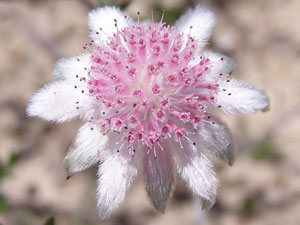 Pink Flannel Flower
Pink Flannel Flower(Actinotus forsythii)
The Pink Flannel Flower (Actinotus forsythii) is rarely seen because of its restricted distribution and because it appears only sporadically.
After producing seed between April and May, the plant dies off and is blown away by the winds.
It is believed that an important factor in the subsequent germination is fire, followed by suitable rain.
Flower heads are unmistakable as they are about 25mm across with pink flowers in the centre and white bracts around the central flowers.
Its distribution is restricted to a few locations in the higher Blue Mountains and it has also been recorded on the south coast and southern tablelands between Nerriga and Sassafras.
– the Darug and Gundungurra people –
and pay respect to their Elders past, present and emerging.
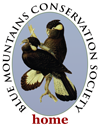
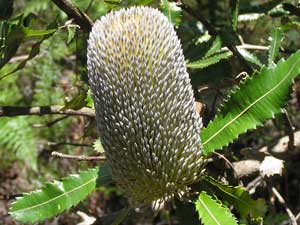 Old Man Banksia
Old Man Banksia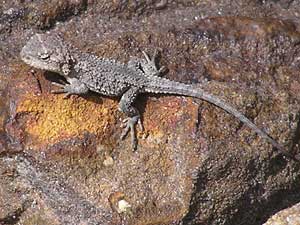 juvenile Mountain Dragon
juvenile Mountain Dragon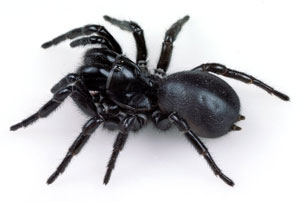 female Blue Mountains Funnel-web Spider
female Blue Mountains Funnel-web Spider 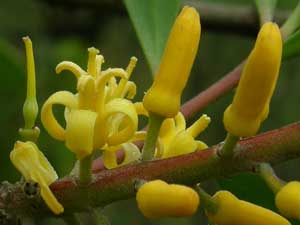 Broad-leaved Geebung (Persoonia levis)
Broad-leaved Geebung (Persoonia levis)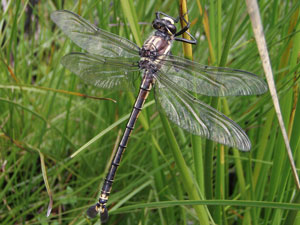 male Giant Dragonfly
male Giant Dragonfly